The Alto TR1 Plus from Aussie outdoor brand Sea to Summit is a double-skinned solo tent designed for lightweight backpacking. It’s described as a ‘3+ season’ model, intended to enable use into the so-called ‘shoulder seasons’ of early spring and late autumn, thanks to more weatherproof fabrics. This is what distinguishes the ‘Plus’ version from the standard model. We’d say it’s worth the upgrade.
It is slightly more expensive, but features a full fabric inner, which is considerably warmer than mesh, plus upgraded waterproofing for the bathtub groundsheet (improved from 1200mm to 2500mm hydrostatic head). It’s therefore much better suited to general wild camping and long-distance, as well as multi-day walks in the hills and mountains.
The Alto TR1 Plus also strikes a good balance between low weight and liveable space. The major innovation in design terms is a wishbone-style spreader bar that the brand calls Tension Ridge architecture. This increases head height, creates more volume overall and improves airflow through the tent. It also helps to keep the tent walls taut, reducing bowing and buckling in breezy conditions.
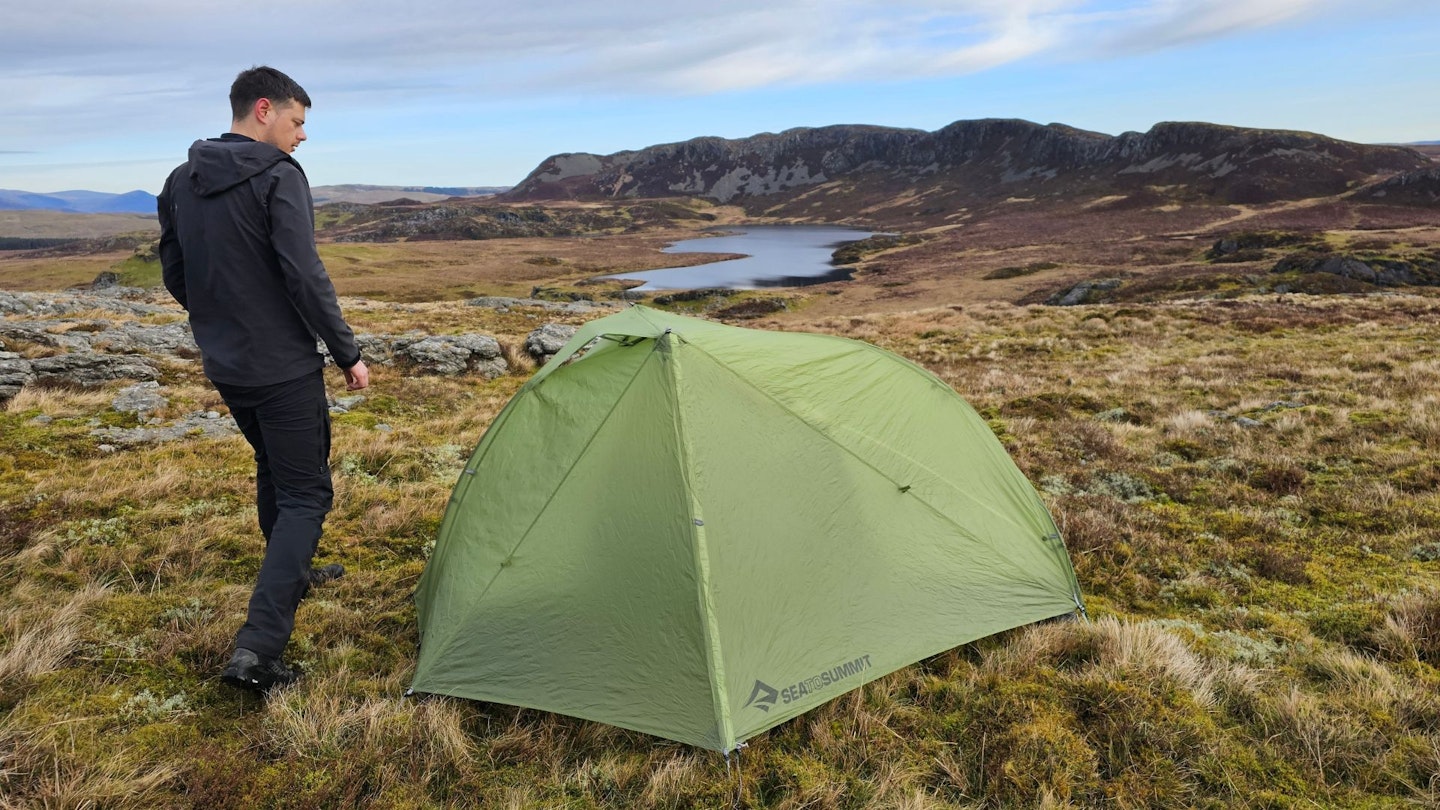 LFTO
LFTOwww.alpinetrek.co.uk
Pros
- Lightweight
- Quick and easy to pitch
- Great interior space
- Large vestibule
Cons
- Some rival tents pack down a little smaller
- Not the best value option
- Pitches inner first
| Type | Semi-freestanding |
| Weight | 1.23kg |
| Packed size | 46 x 10cm |
| Doors | 1 |
| Vestibules | 1 |
| Inner | 20D ripstop nylon |
| Fly | Silicone and Polyether Poly-Urethane (Sil-PeU) coated 15D fly fabric (1200mm HH) |
| Groundsheet | 20D ripstop nylon (2500mm HH) |
| Poles | DAC Featherlite NFL TH72 |
Design and features
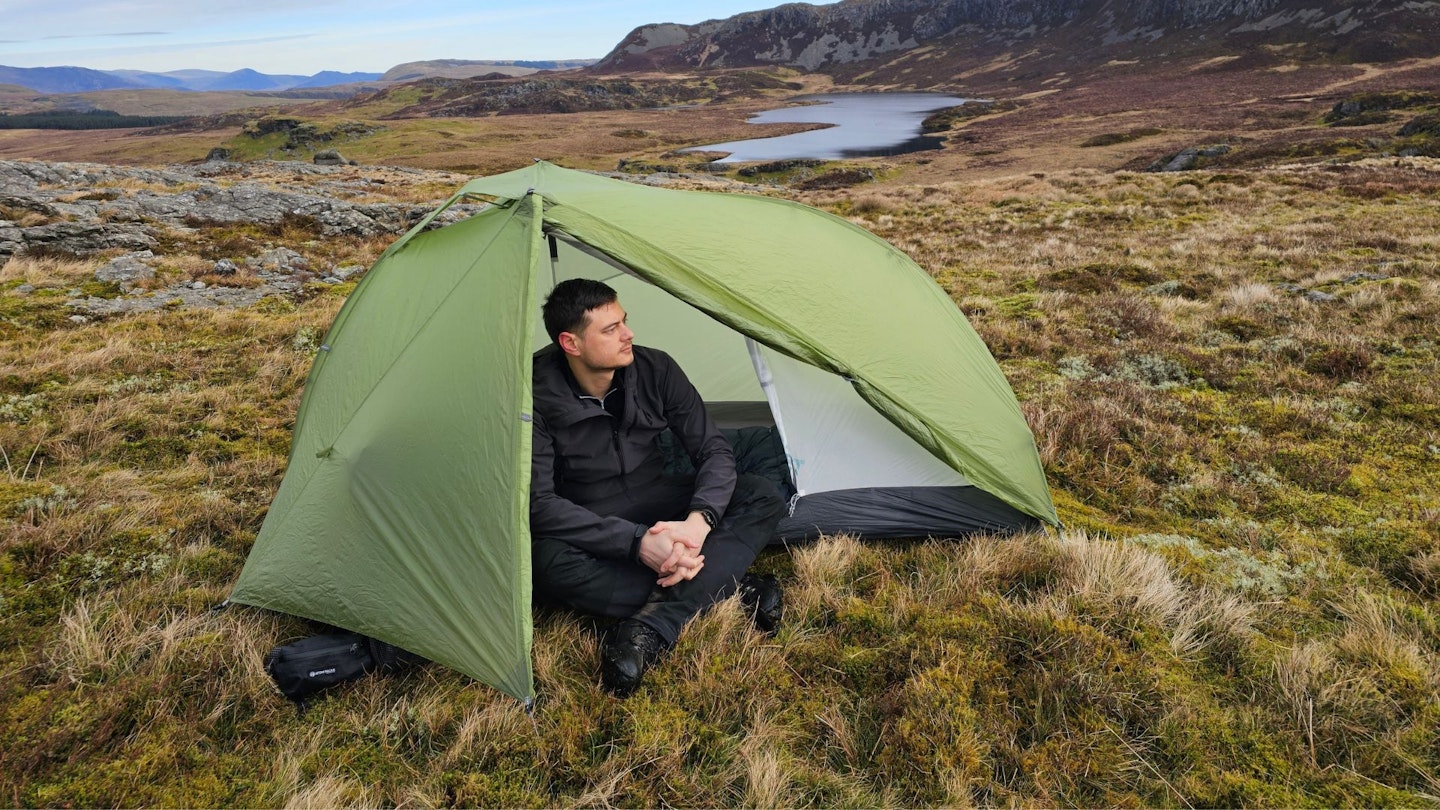
The Alto TR1 has a tripod-style hubbed pole system with a pre-bent pole and integrated corner struts. This design results in steeper internal walls and therefore improved headroom and interior volume overall. This is further improved by a wishbone-style integrated spreader bar, which Sea to Summit refers to as ‘Tension Ridge’ architecture. The structure and geometry is the brainchild of noted tent designer Jake Lah, founder and head designer of leading tent pole manufacturer DAC.
The upshot is that this tent is exceptionally roomy for a twin-skinned one-person tent. There’s over a metre of headroom at the apex (105cm, to be precise), which gives plenty of space to sit upright. Length is a similarly generous 210cm, so this is a tent that will suit taller campers, even if you’re well over 6ft.
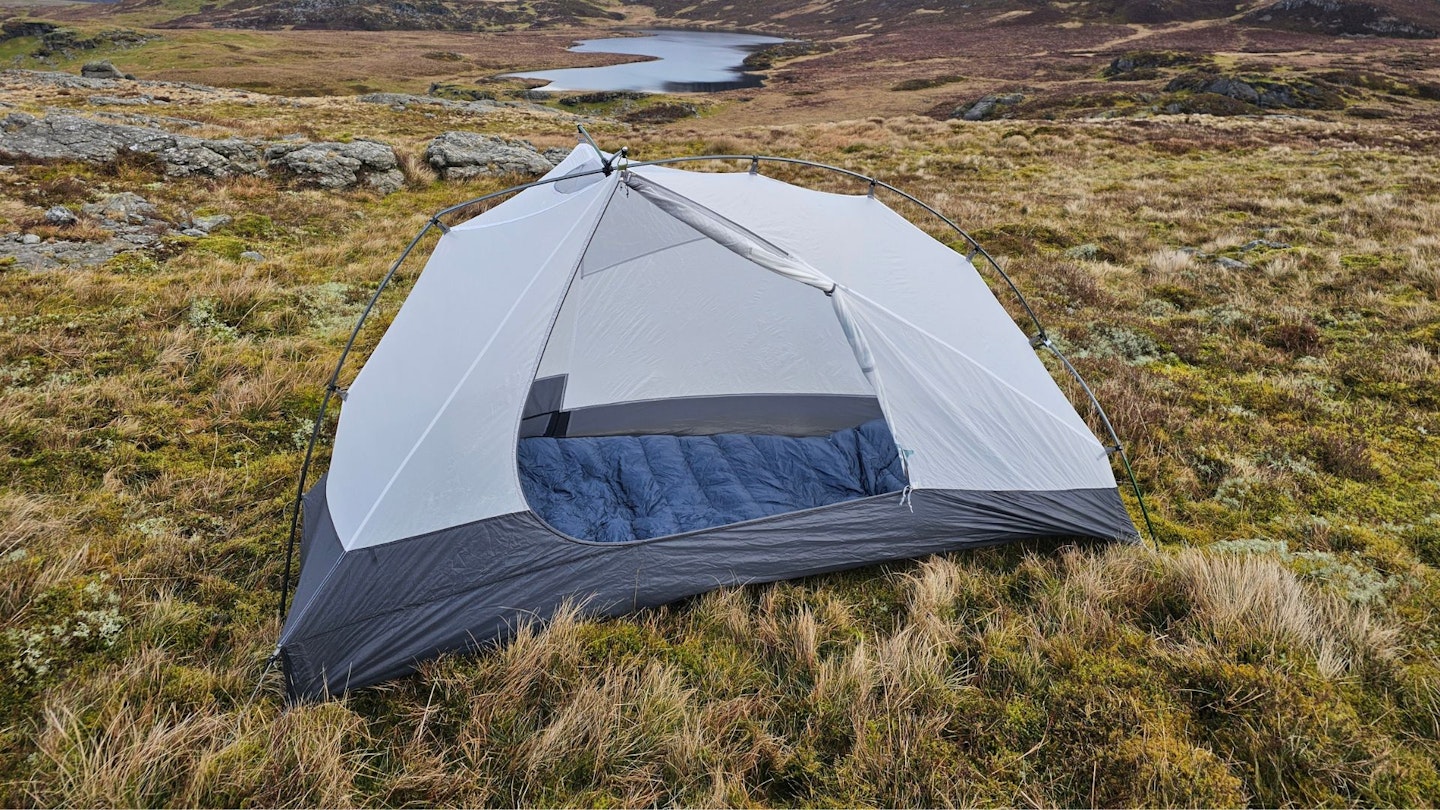
The tent also has a trapezoidal floor area that measures an impressive 1m at its widest point. This does taper at the head and foot ends, but you’ll still get a 60cm-wide sleeping mat in here without any issue. All this ensures that the Alto TR1 feels a lot less cramped than many rival one-person tents. In addition, you get a generous porch area, which offers enough space to stash boots, a big pack and still leave room to cook (with the door open!) in inclement weather.
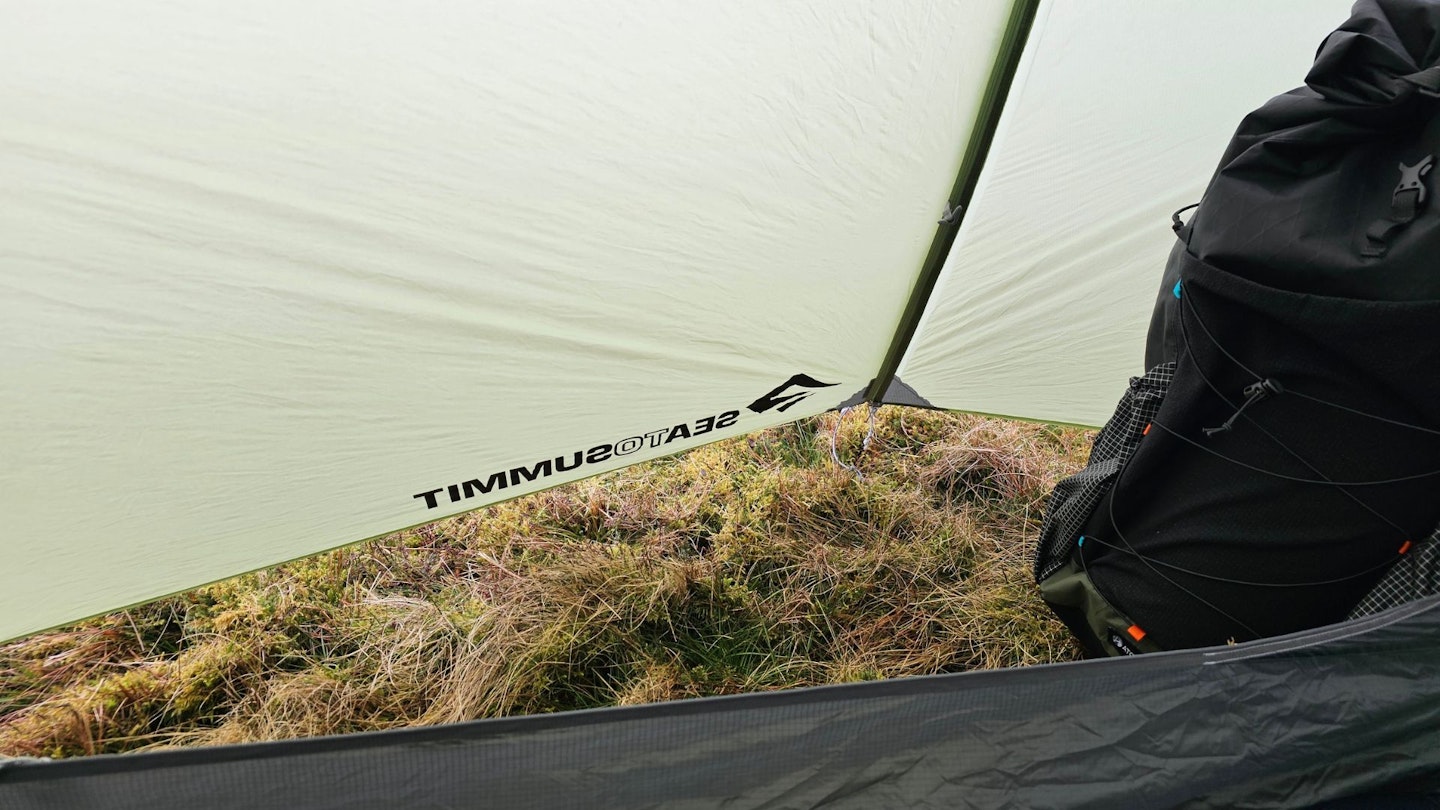
There are plenty of other unusual and unique features too. Some might find them overly fussy or gimmicky, but they certainly have their uses. Firstly, the inner is fitted with press studs to fit a so-called ‘lightbar’. This is basically just the pole bag, which turns into a light-diffusing headtorch pocket, ideal for bringing a warm glow to your tent at night. The long thin bag can be attached overhead or to the head end of the tent for use as a reading lamp.
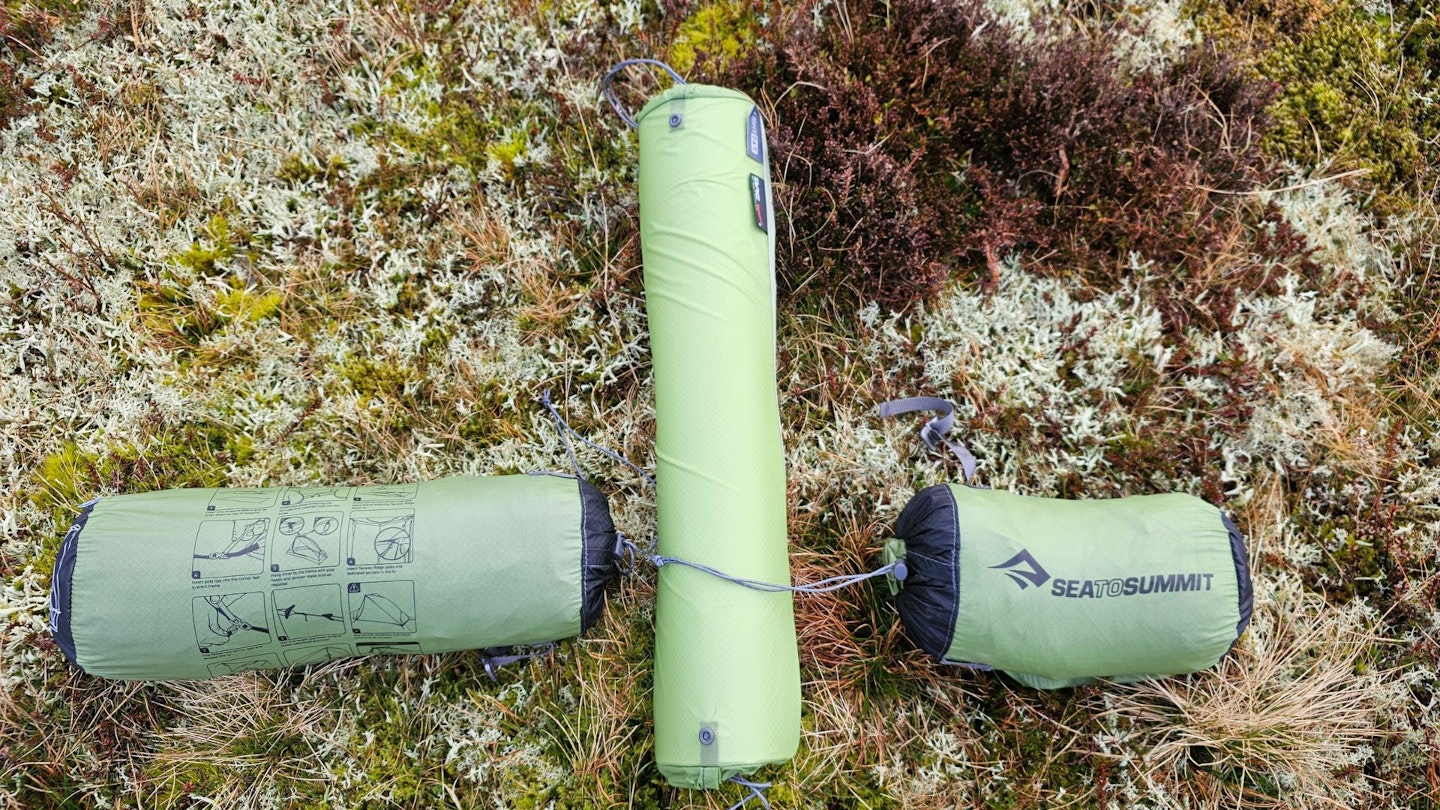
The stuff sack is also worth a mention. It divides into three elements for more efficient packing (though whether this is needed for a solo tent is debatable – after all, you’ve got to carry it all somehow!). But if you do like to divide your tent up and pack the poles and inner separate from the fly (as tends to happen when the latter inevitably gets a soaking), this system at least makes that easy.
Performance
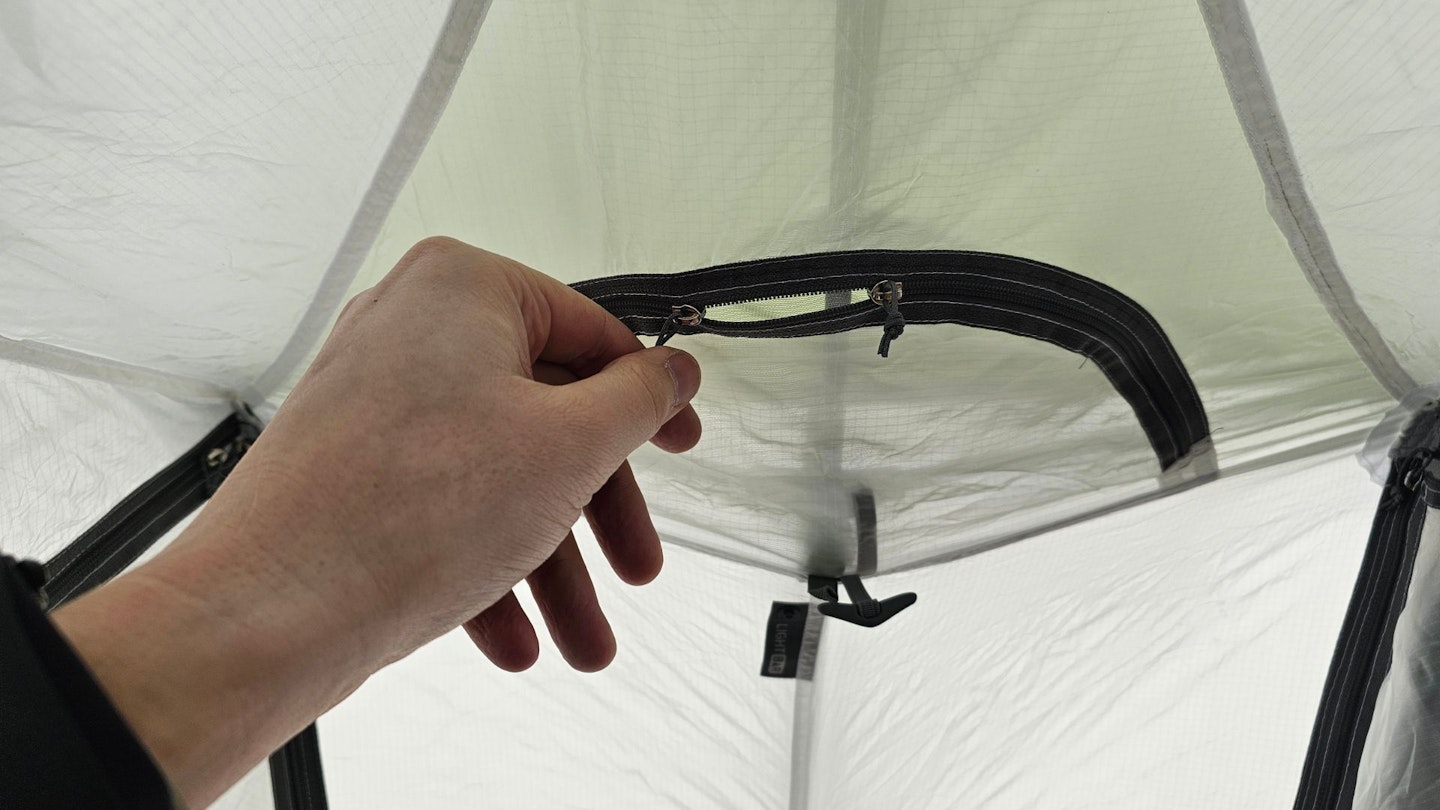
As noted in the intro, this ‘Plus’ version has been upgraded with more weatherproof fabrics than the standard TR1. Rather than a mesh inner tent, this model has a full fabric inner, and the waterproof rating of the bathtub floor has been increased from 1200mm hydrostatic head to 2500mm. The bathtub itself comes up nice and high too. For use in changeable climates like the UK, these upgrades are very welcome indeed. It reduces the risk of seepage from cold, wet ground and the fabric upper adds noticeable warmth too. The lightweight fabrics feel fairly delicate, but overall build quality is excellent.

The tent is well ventilated throughout. Condensation was never an issue on test. That’s because there are three zippered mesh vents in the upper area of the tent to ensure good airflow. A half-moon shaped vent at the apex also has a matching zippered vent in the flysheet, so you can really get a good breeze through the tent to stop it feeling stuffy.
It’s easy to pitch, with an inner-first configuration – though with the use of the optional additional footprint (sold separately, priced at £45, weighs 179g) it could also be used ‘fly only’ as a superlight single skin shelter. You can also roll back the fly halfway for a ‘stargazer’-style setup. We tested the tent with its footprint and would say it’s well worth having. It fits the base of the tent perfectly and makes pitching even easier, while also adding protection and durability.
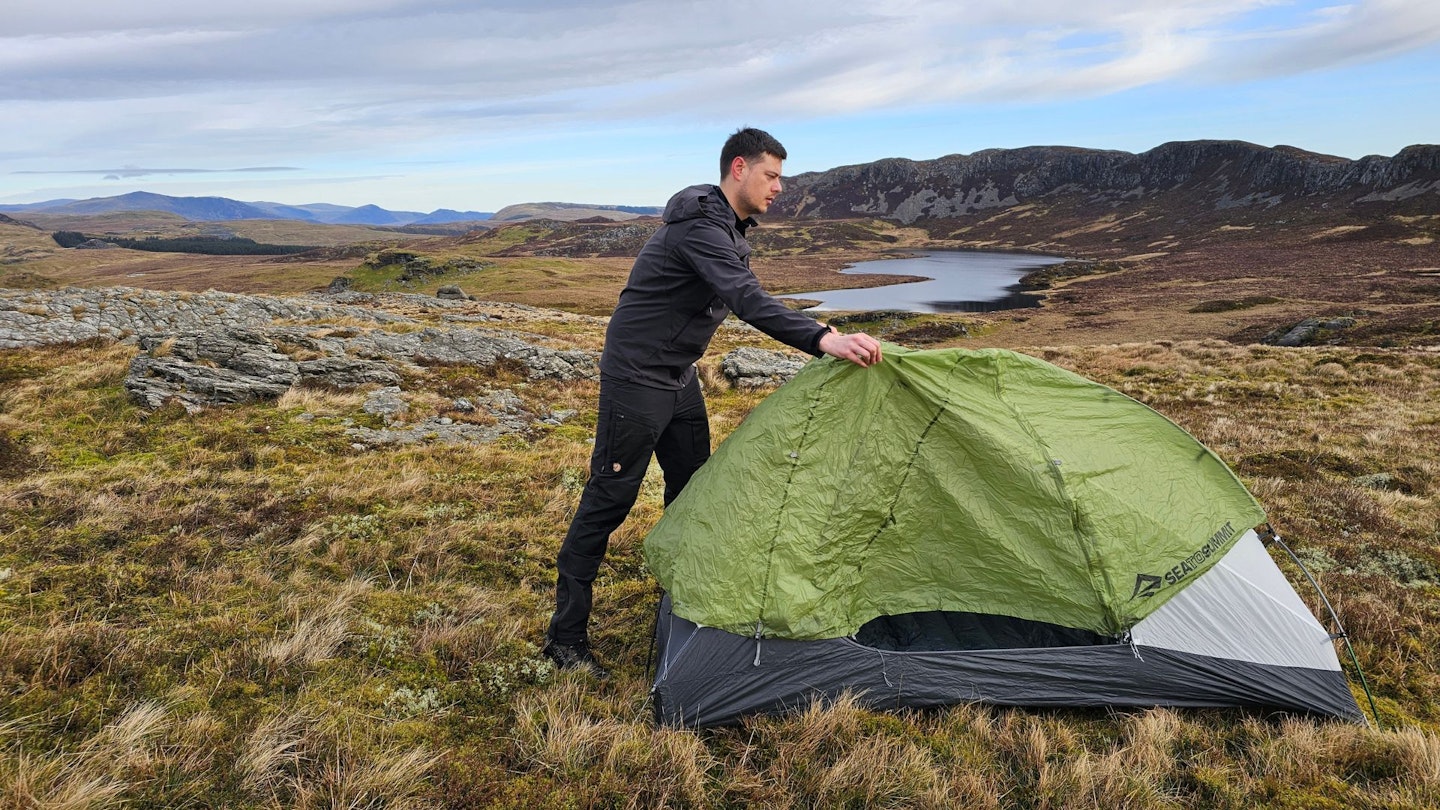
The overall coverage of the flysheet is pretty good for a three-season tent. It also feels stable, and extra guy-out points made from sturdy reflective webbing tape enable you to add reinforcement in gusty conditions. Extra guy lines (x4) and pegs (x2) are supplied with the tent. You may well need these, since the design does have fairly steep walls, which can occasionally catch the wind in more exposed pitching locations. You also get a repair kit and a pole sleeve in case of emergency.
Sustainability
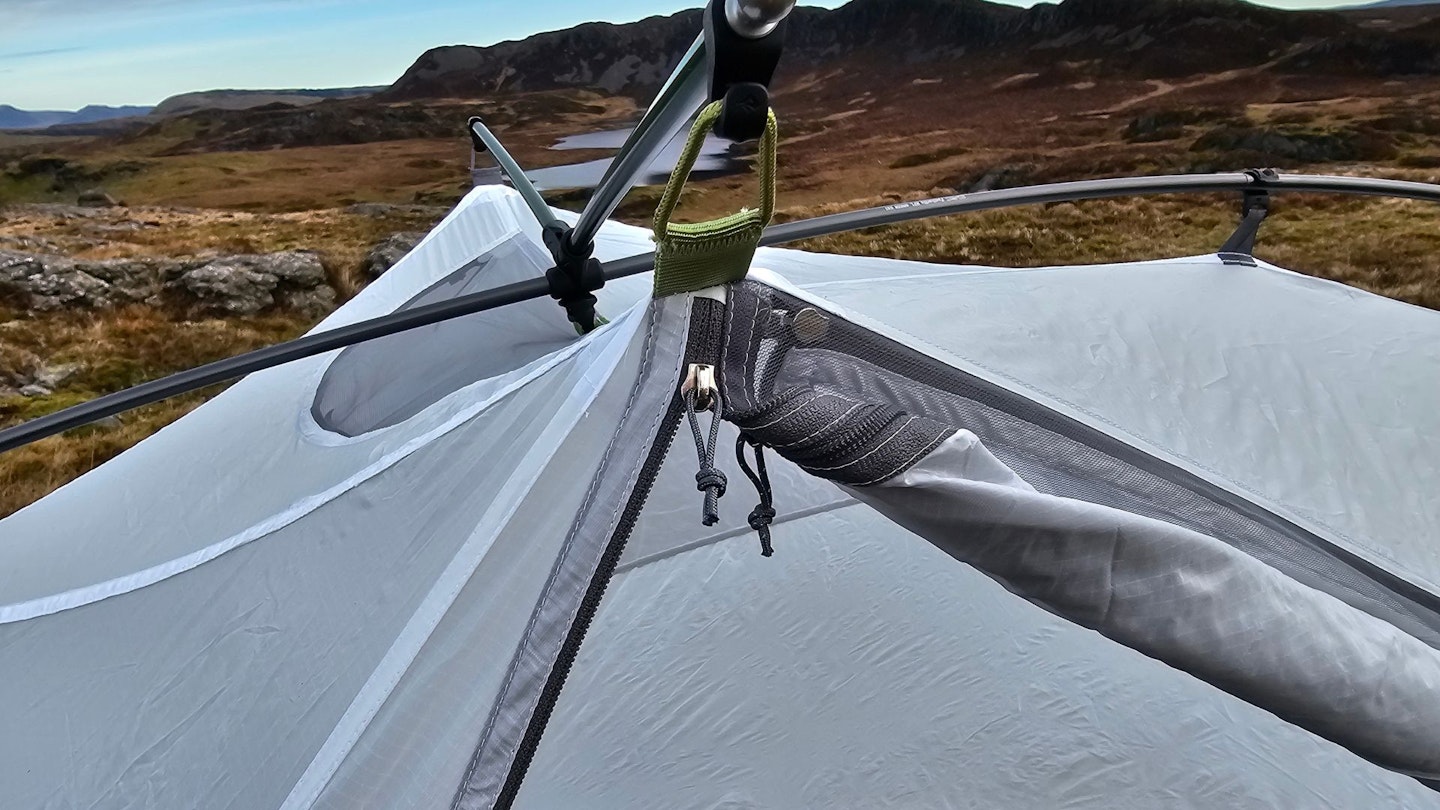
Sea to Summit’s overall sustainability report is mixed. It would be fair to say the company is ‘on a journey’. As such, it has estimated its Scope 1, 2 and 3 carbon emissions in order to try and reduce its overall carbon footprint. However, it has not yet put steps in place to offset or limit these emissions.
In manufacturing terms, the company has increased the use of traceable recycled materials, started to use bluesign approved fabrics in some product lines and transitioned to PFC-free water repellent finishes. However, this tent contains none of the above.
The company affirms they are committed to fair labour practices in their supply chain. They work with local suppliers and third-party auditors to confirm compliance with a factory code of conduct, which aligns with the internationally recognised SA8000 Social Accountability Labour Standard.
Price and competition

With an RRP of £490, this is a premium solo tent, though in price terms it slightly undercuts similar rivals in our 2024 test selection, like the MSR Hubba NX, the NEMO Hornet Elite OSMO 1 and the Exped Mira 1 HL. Given the high quality and performance, it’s a good buy. However, as always, if you’re considering splashing the cash on this tent, it’s worth shopping around to try and find a better deal. A cursory Google search revealed it was available online for £50 less than the RRP.
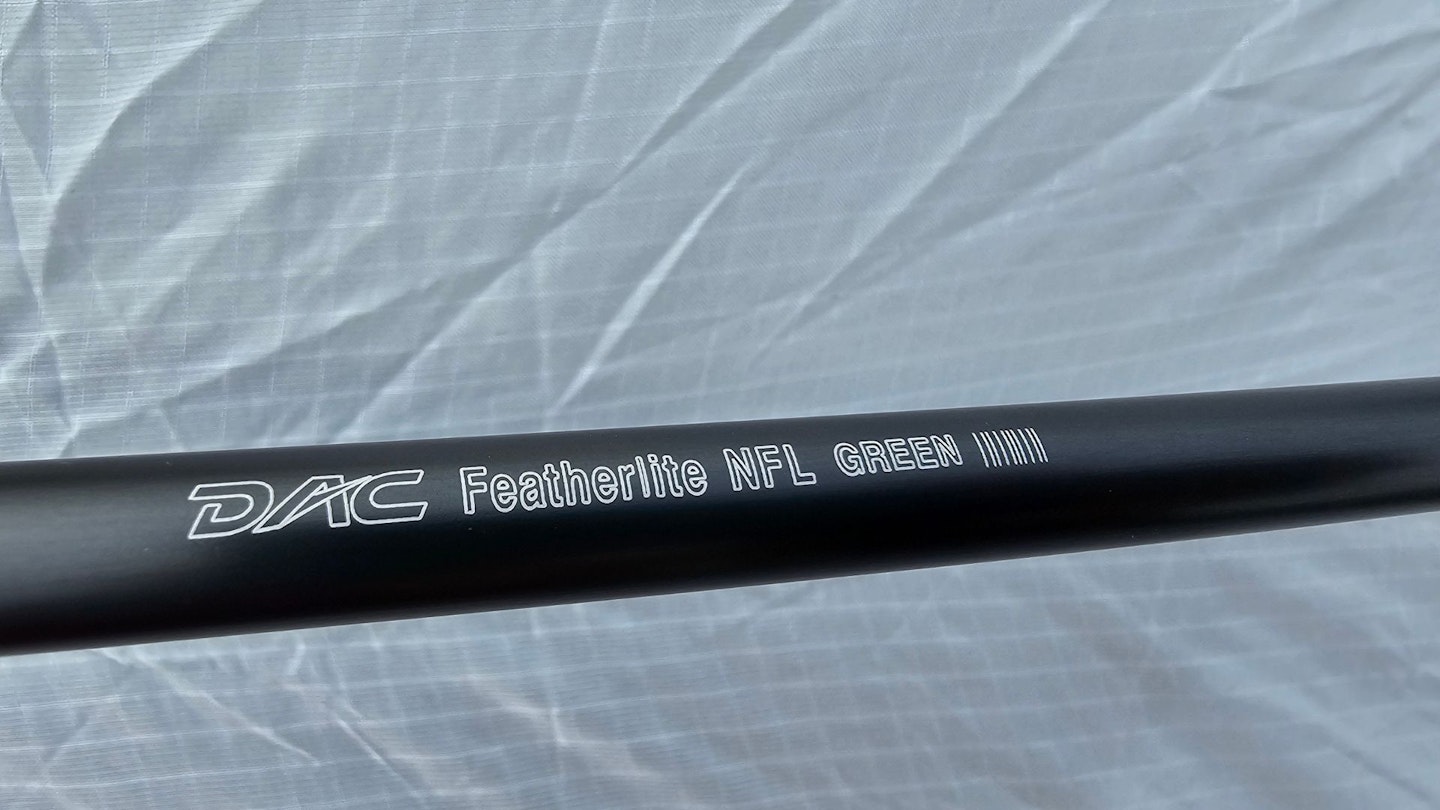
Overall, this is a very good lightweight backpacking tent that delivers reliable performance for three-season use. We wouldn’t push it too far into early spring or late autumn, but happily used it wild camping in the hills and mountains of Snowdonia throughout the March test period.
In truth, there’s not much to choose between this and our group test winner, the MSR Hubba NX. Which one to go for depends on your priorities. The Alto TR1 plus does have some unique and innovative features that the Hubba lacks. The Alto also has superior headroom. The weights are comparable, though the Alto TR1 Plus isn't quite as tough or weatherproof as the MSR tent.
Verdict
A very spacious tent with innovative pole geometry, resulting in great liveability for multi-day backpacking trips. Balances weight, performance and price, but is just pipped by MSR’s Hubba NX, which is comparable in weight yet also boasts slightly tougher fabrics.
How we tested
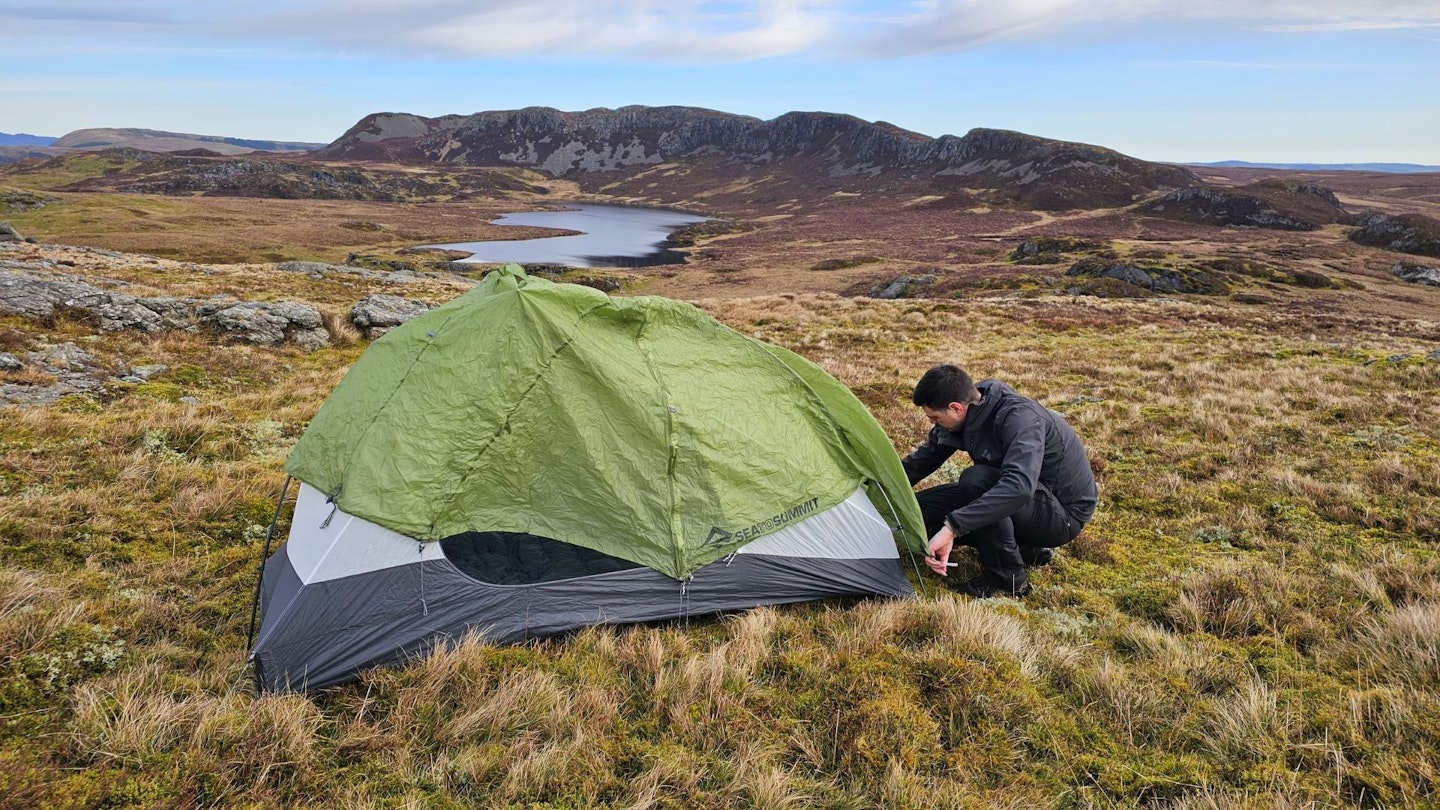
We borrowed a test sample of the Sea to Summit Alto TR1 Plus from the brand for several weeks, mainly wild camping in the hills and mountains of Eryri (Snowdonia). This included backpacking stretches of several classic long-distance trails such as the Snowdonia Slate Trail (Llwybr Llechi Eryri), the Cambrian Way (Taith Cambria) and the Snowdonia Way (High Route).
As well as individual product testing, this tent was pitched alongside the 5 other leading solo backpacking tents selected for our 2024 group test, enabling direct comparison of overall dimensions, space, weight, packed size, ease of pitching and other key features.
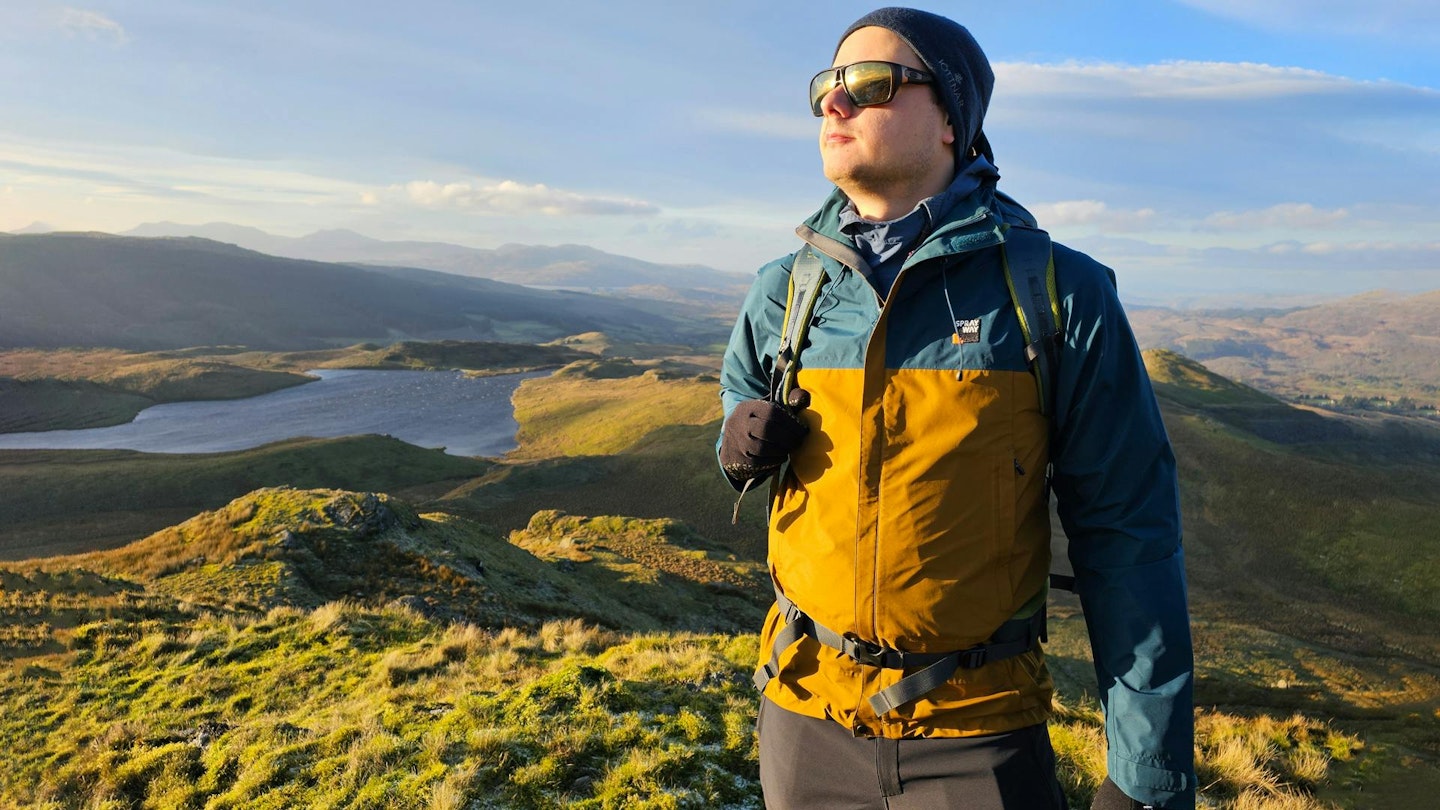
The reviewer was Matt Jones, one of Live For The Outdoors' and Trail magazine’s regular gear testers. Matt is an experienced wild camper, backpacker and long-distance walker. He’s completed numerous trails end to end in the UK, including the Pennine Way, the Cambrian Way, the West Highland Way and the Great Glen Way. He’s also hiked extensively in the US, Spain, Scandinavia and New Zealand.
